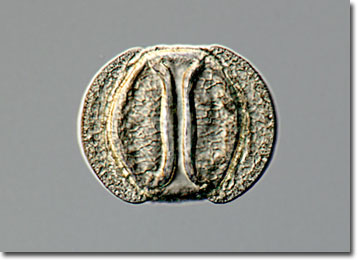Differential Interference Contrast Image Gallery
Pine Tree Pollen
Pine trees, which are found primarily in northern temperate regions of the world, are conifers with needle-like leaves. As gymnosperms, pine trees produce exposed seeds and do not flower.

A common sight on forest floors, pinecones are reproductive organs of the trees that may contain female eggs or male sperm. Reproductive organs of both sexes may be found on the same tree, but are usually located in different areas, female pinecones normally existing in the crown above the male cones. Their position on the tree helps prevent self-fertilization since the gametes, or pollen, produced by the male pinecones cannot easily blow onto the female cones of its own tree when released into the wind.
Pollen is generally released by pine trees in the spring or early summer. The substance has the appearance of a fine yellow or green dust, and when it covers large areas, it is sometimes mistaken for a chemical spill. However, though pollen may cause allergic reactions in humans, it is for the most part harmless, and even beneficial to some species. In fact, pine pollen acts as a source of food for a variety of fungi and microscopic animals.
